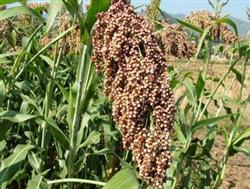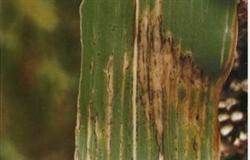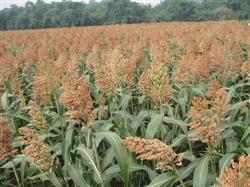New cultivation techniques for High yield of Sorghum

1. Timely sowing to protect the whole seedling sowing date is based on soil temperature and soil moisture. In early spring, seeds can be sown when the soil is 10 centimeters deep and the ground temperature is 12 ℃ and the water content is 15-20%. If necessary, you can first irrigate water to replenish moisture and then sow or sit in water to add moisture to sow to prevent bud drying and uneven emergence of seedlings. The western part of Liaoning Province, which is the main producing area of sorghum, is often prone to spring drought. Grasping the moisture in spring is the key factor to determine the sowing date. In the mountainous areas with severe spring drought, sloping land and Xiangyang plots should be sown early, while low-lying areas prone to waterlogging, coastal and plain plots can be sown late. The precocious species (Liaoza 1) can wait for rain sowing, which should be late rather than early, so as to prevent premature senility and lodging in the later stage. Considering from the scope of the whole province, the sowing date should be set from April 28 to May 4. While determining the sowing date, it is necessary to improve the sowing quality, clear and dry the seeds before sowing, fine soil preparation and foot fertilizer to ensure that the whole seedlings are sown at one time. two。 Reasonable close planting density should be determined according to local conditions, first, according to local ecological and production conditions, and second, according to the inherent characteristics of varieties. The general density of hybrids used in Liaoning is 6500Mu 7000 plants per mu. In the above range, fertile land should be dense and thin land should be sparse; plots with high management level should be dense and poorly managed plots should be sparse; sloping land, low-lying land and saline-alkali land should be reduced appropriately. Lack of seedling plot, can retain tillers, each plant leaves two tillers. The plot covered with plastic film can be cultivated with double plants with large ridges. 3. Fertilizer and water management sorghum is a fertilizer-loving and fertilizer-tolerant crop. Generally, 4000 kg of farm manure is applied per mu. According to the soil condition and yield index of the main sorghum producing areas, the following fertilization standards should be determined: Jinzhou and Jinxi area, potassium deficiency is more serious, attention should be paid to the application of potassium fertilizer. If the yield target is set at 600 kg per mu, the standard nitrogen, diammonium phosphate and potassium sulfate will be 44, 66, 13 and 25 kilograms per mu respectively. In general, diammonium acid and potassium sulfate are used as base fertilizer in production. In Chaoyang area, the soil is relatively poor, and the simple effects of nitrogen, phosphorus and potassium fertilizers are more obvious. therefore, the characteristics of fertilization should increase all kinds of fertilizers. If the yield target is set at 550 kg, the standard nitrogen, diammonium phosphate and potassium sulfate will be applied per mu of 64ml, 66kg, 14kg and 18kg respectively. In addition, it is very important to apply enough farm manure and fertilize the land. In Fuxin area, the soil is also very barren. When the yield index is determined to be 550 kg, the amount of fertilizer applied is 58 Mu 60 kg per mu, 11 Mel 12 kg for diammonium phosphate and 17 kg for potassium sulfate. Topdressing sorghum jointing (young panicle differentiation stage) fertilizer, generally in sorghum 12mur14 leaves, combined with mid-tillage to cultivate the soil, buried fertilizer in the soil to promote absorption and utilization, jointing fertilizer accounted for 2/3 of the total application. Topdressing before picking the flag accounts for 1/3 of the total amount of fertilizer applied. In other sorghum producing areas, reasonable fertilization standards can be determined with reference to the yield indicators of the above three areas. Sorghum is a drought-tolerant crop with strong drought resistance, but it does not mean that there is no yield loss under drought conditions, but the loss is less than that of corn, wheat and other crops. Sorghum does not need much water at the seedling stage, but when the seeds germinate, the soil moisture must be ensured. When necessary, water can be irrigated first and then sown. During the period from the extraction of the sixth leaf to before jointing, drought is beneficial to squatting seedlings and promote root rooting. however, the period from booting to filling stage is a critical period of water demand, which accounts for 30% of the total water demand. water shortage in this period will seriously affect the number of grains per ear. Thus affecting the output. Therefore, at jointing and booting stage and filling stage, under the condition of drought and lack of rain, water should be irrigated in time where there are conditions. Only in this way can we promote fertilizer with water, borrow water from fertilizer, promote each other, give full play to the advantages of individuals and the unity of groups, and achieve the goal of increasing production. In addition, the waterlogging tolerance of sorghum is the strongest among dry grain crops, and as long as timely drainage is encountered, it will not have a great impact on yield. While grasping the above three technical links, the whole field management should be included in various technical links, such as field inspection and seedling replenishment, seedling determination, shovel cultivation, timely harvest and other operation links should be carried out in time to ensure the high and stable yield of sorghum.
- Prev

Sorghum black bundle disease
Symptomatic sorghum black bundle disease is a vascular bundle disease, also known as duct bundle blackening. When the leaf is obvious, brown stripes appear on the leaf vein, and there are large necrotic spots along one or both sides of the main vein, so that the leaf and leaf sheath become purple or brown, when the leaf is dry, the stem is a little thick, and there is branching in the upper part of the diseased plant. Cross-sectioning the diseased stem.
- Next

High-yielding Cultivation Techniques of Sorghum
Sorghum is one of the main dry crops in Haicheng City, with drought resistance, waterlogging resistance, salt tolerance, adaptability and other characteristics, due to the change of people's dietary structure in recent years, sorghum rice again "favored", become one of the staple foods that people like, appropriate expansion of high-dye planting area, can achieve crop rotation, balance and benefit...
Related
- The first cup of black tea in spring, the flavor and history of tea gardens in Kenya, Africa
- The computer can not only choose potatoes, but also grow tea rice. AI will grow winter oolong tea champion.
- It is not only the inflated tea bitten by insects, but also engraved with the four seasons tea in Beipu.
- The Oriental Beauty Tea Festival in Zhuxian County takes the stage at the weekend to experience the plus-size feast of oil tea.
- & quot; Oriental Beauty Tea & Exploration of Emei in Hsinchu, the hometown of quot;
- The new variety of strawberry "Tainong 1" dessert is the first choice with mellow aroma. Crimson gorgeous
- History of Tea in Taiwan: from Wild Inner Mountain to Export Tea Garden
- Two types of Taiwan Oriental Beauty Black Tea won the British three-Star Award for Childhood Tea Xiang Zhang Jiaqi changed from pilot to champion tea maker.
- Banana species and varieties: the planting history of Taiwan Xianren banana and dwarf banana is long, is banana disease resistant?
- Coffee planting Technology: Qianjie Coffee from Seedling to harvesting

